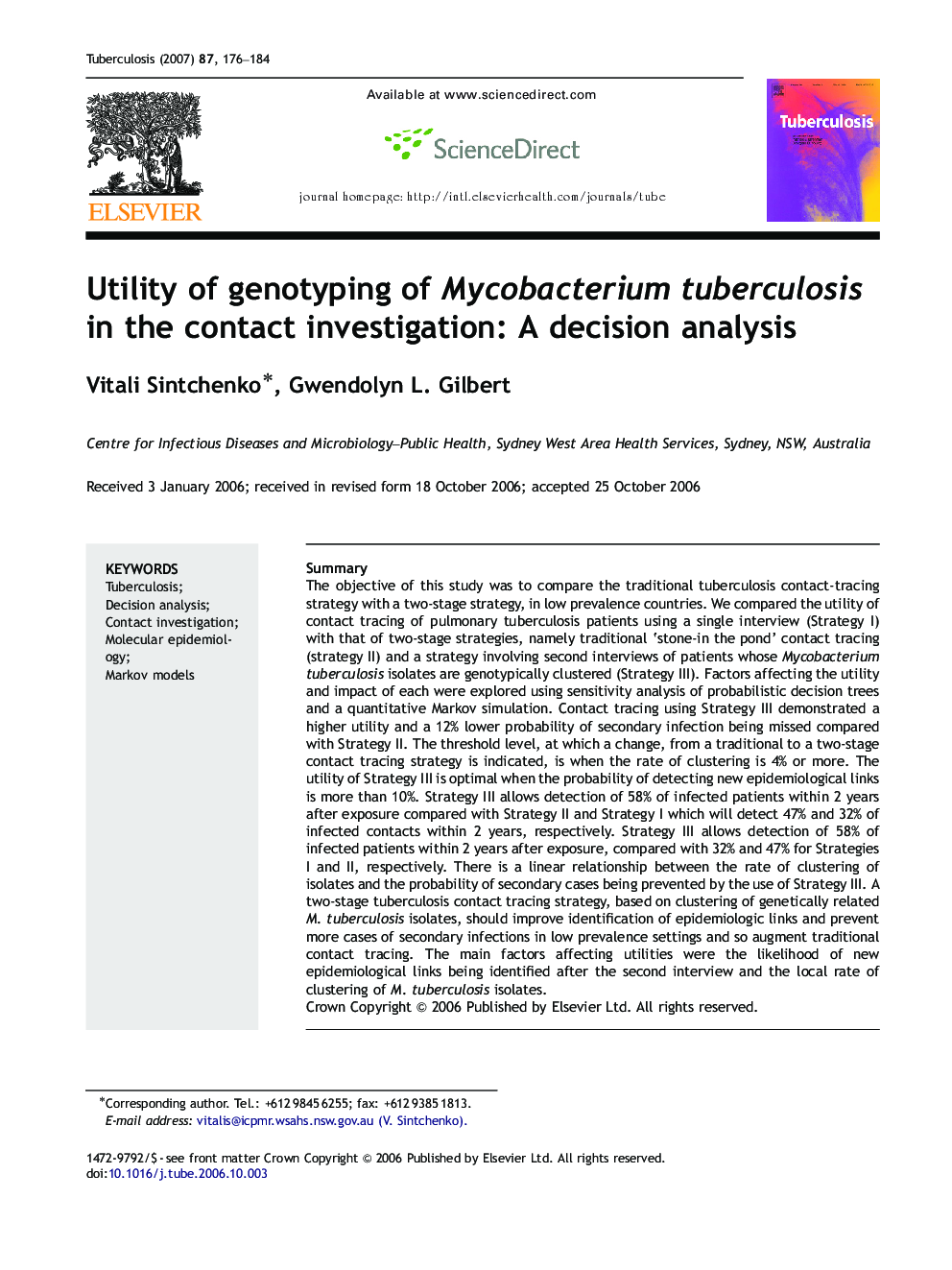| کد مقاله | کد نشریه | سال انتشار | مقاله انگلیسی | نسخه تمام متن |
|---|---|---|---|---|
| 2402090 | 1102396 | 2007 | 9 صفحه PDF | دانلود رایگان |

SummaryThe objective of this study was to compare the traditional tuberculosis contact-tracing strategy with a two-stage strategy, in low prevalence countries. We compared the utility of contact tracing of pulmonary tuberculosis patients using a single interview (Strategy I) with that of two-stage strategies, namely traditional ‘stone-in the pond’ contact tracing (strategy II) and a strategy involving second interviews of patients whose Mycobacterium tuberculosis isolates are genotypically clustered (Strategy III). Factors affecting the utility and impact of each were explored using sensitivity analysis of probabilistic decision trees and a quantitative Markov simulation. Contact tracing using Strategy III demonstrated a higher utility and a 12% lower probability of secondary infection being missed compared with Strategy II. The threshold level, at which a change, from a traditional to a two-stage contact tracing strategy is indicated, is when the rate of clustering is 4% or more. The utility of Strategy III is optimal when the probability of detecting new epidemiological links is more than 10%. Strategy III allows detection of 58% of infected patients within 2 years after exposure compared with Strategy II and Strategy I which will detect 47% and 32% of infected contacts within 2 years, respectively. Strategy III allows detection of 58% of infected patients within 2 years after exposure, compared with 32% and 47% for Strategies I and II, respectively. There is a linear relationship between the rate of clustering of isolates and the probability of secondary cases being prevented by the use of Strategy III. A two-stage tuberculosis contact tracing strategy, based on clustering of genetically related M. tuberculosis isolates, should improve identification of epidemiologic links and prevent more cases of secondary infections in low prevalence settings and so augment traditional contact tracing. The main factors affecting utilities were the likelihood of new epidemiological links being identified after the second interview and the local rate of clustering of M. tuberculosis isolates.
Journal: Tuberculosis - Volume 87, Issue 3, May 2007, Pages 176–184